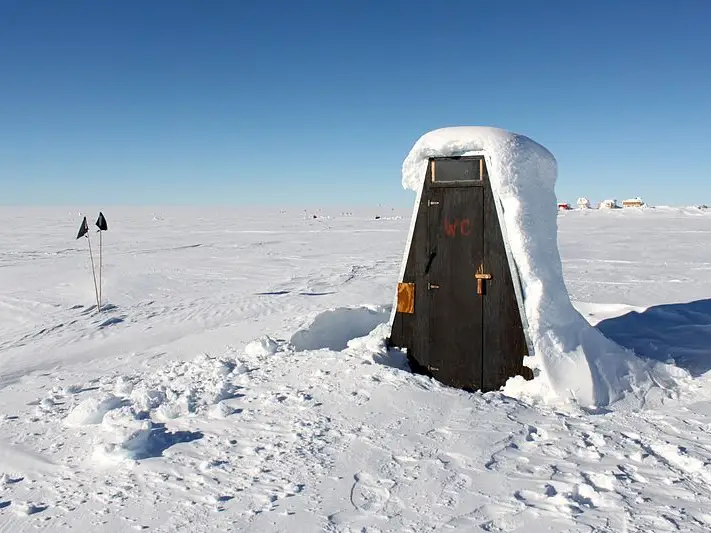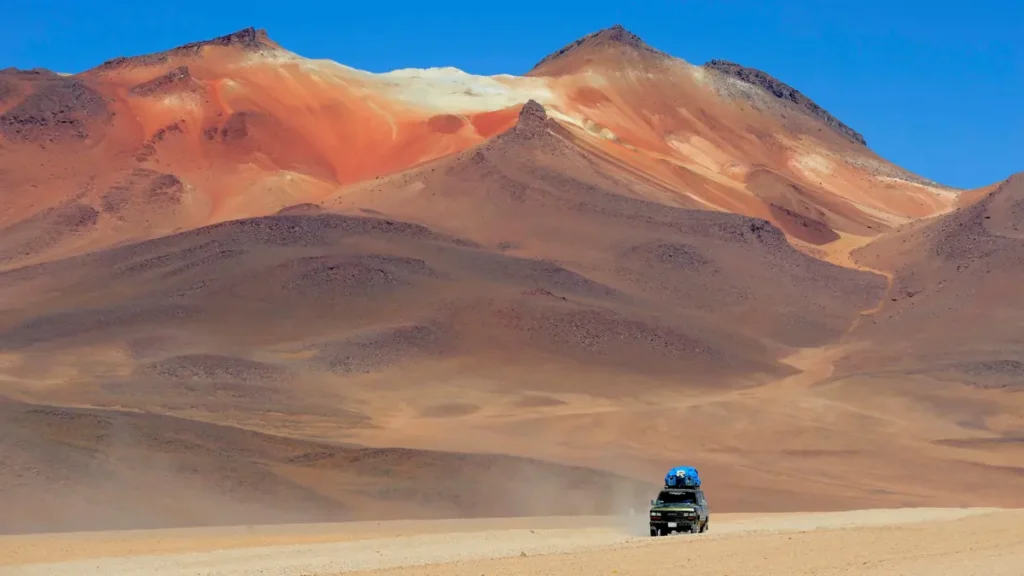Introduction:
Have you ever wondered where to find the hottest, coldest, wettest, or driest places? Our planet is home to some of the most extreme climates imaginable, from scorching deserts to frigid tundras. These climates push the limits of what humans—and even nature—can endure. In this article, we’ll journey to the five most extreme climates on Earth and explore what makes them so remarkable. Whether you’re a geography enthusiast or simply curious about the world’s most extreme places, you’ll be fascinated by the extremes our planet can reach. Let’s dive in!
Read also: Global Warming | The Shocking Future of Our Planet
1. The Hottest Place on Earth: Death Valley, California, USA
Overview: Death Valley in southeastern California is officially recognized as the hottest place on Earth. It’s part of the Mojave Desert, and its extreme temperatures result from its low elevation and desert environment.
- Record Temperature: The highest temperature ever recorded on Earth was 134°F (56.7°C) in Death Valley on July 10, 1913.
- Unique Geography: Death Valley is also one of the lowest points in North America, sitting 282 feet below sea level.
Why It’s Extreme: Death Valley’s temperatures soar during summer, with daily highs often exceeding 120°F. The area’s geography traps heat, creating a “furnace effect” that makes it the hottest region on Earth.
Read also: 10 Heartbreaking Stories of Endangered Species in California
Fun Fact: Despite its name, Death Valley is home to a surprising variety of wildlife, including coyotes, lizards, and desert plants that have adapted to the extreme heat.
2. The Coldest Place on Earth: Antarctica
Overview: Antarctica, the world’s southernmost continent, holds the record for the coldest temperature ever recorded. It’s covered in ice year-round, and its extreme cold is due to its high elevation, location at the Earth’s pole, and distance from the sun.
Read also: Antarctica from Space: A Visual Story of a Continent in Crisis
- Record Temperature: The lowest temperature ever recorded on Earth was -128.6°F (-89.2°C) at the Vostok Station in Antarctica on July 21, 1983.
- Unique Geography: Antarctica is covered by an ice sheet that holds about 70% of the world’s freshwater, and its average elevation is over 7,500 feet above sea level.

Why It’s Extreme: Antarctica’s climate is cold and incredibly dry. Despite being covered in ice, Antarctica is technically a desert, receiving only about 2 inches of precipitation annually.
Fun Fact: During the winter months, the sun doesn’t rise in Antarctica, leading to months of complete darkness, which further contributes to the freezing temperatures.
3. The Wettest Place on Earth: Mawsynram, India
Overview: Tucked away in Meghalaya in northeastern India, Mawsynram is the wettest place on Earth. This region experiences some of the highest annual rainfall, largely due to its location at the foothills of the Himalayas and the monsoon season.
- Average Rainfall: Mawsynram receives an average of 467.4 inches (11,871 mm) of rain annually, about 39 feet of rain!
- Unique Geography: The village of Mawsynram is located in the Khasi Hills, perfectly positioned to catch moisture-laden winds from the Bay of Bengal.
Read also: Giants of the Sky: Atmospheric Rivers – Rainfall Heroes or Flood Villains?
Why It’s Extreme: The combination of seasonal monsoons and Mawsynram’s geographical location causes intense rainfall, often flooding the region. The rain is so hard that residents use grass to soundproof their homes from the deafening downpours.
Fun Fact: The nearby town of Cherrapunji, just a few miles away, previously held the title of the wettest place on Earth before Mawsynram took over.
4. The Driest Place on Earth: Atacama Desert, Chile
Overview: The Atacama Desert in Chile is the driest non-polar desert in the world. Stretching along the Pacific coast of South America, this region receives less rainfall than almost anywhere else on Earth.
Read also: How is the West Australian Desert Formed?
- Average Rainfall: The Atacama Desert averages just 0.6 inches (15 mm) of rain annually, and some weather stations have never recorded any rainfall.
- Unique Geography: The desert’s arid climate is caused by the rain shadow effect from the Andes Mountains and the Humboldt Current, which prevents moisture from reaching the region.

Why It’s Extreme: The Atacama Desert is so dry that parts resemble the surface of Mars. NASA uses the desert as a test site for equipment designed for Mars exploration.
Fun Fact: Some weather stations in the Atacama Desert have gone decades without recording any measurable precipitation, making it one of the most extreme environments on Earth.
Read also: Desert Food Web: Uncover the Secrets of Life in Extreme Environments
5. The Windiest Place on Earth: Commonwealth Bay, Antarctica
Overview: Commonwealth Bay in Antarctica is recognized as the windiest place on Earth. Wind speeds can reach hurricane levels regularly. The cold air masses and the bay’s geographical layout make it a hotspot for extreme winds.
- Record Winds: Wind speeds in Commonwealth Bay have been recorded at up to 200 miles per hour (322 km/h).
- Unique Geography: The bay is near the Antarctic coast, and the katabatic winds—cold, dense air descending from higher elevations—create these extreme wind speeds.
Why It’s Extreme: Commonwealth Bay experiences almost constant wind, with an average wind speed of 50 miles per hour (80 km/h). The winds are so strong that they shape the ice and snow in the region, making it difficult to conduct research.
Read also: Wind Energy: 3 Reasons to Ditch Fossil Fuels to Fight Climate Change
Fun Fact: The extreme wind speeds in Commonwealth Bay make it one of the most challenging places for scientists and explorers to work in Antarctica.
| Location | Climate Extreme | Record Measurement | Notable Feature |
| Death Valley, USA | Hottest | 134°F (56.7°C) | Lowest point in North America |
| Antarctica | Coldest | -128.6°F (-89.2°C) | Largest ice sheet in the world |
| Mawsynram, India | Wettest | 467.4 inches (11,871 mm) of rain annually | Caught between monsoon winds and mountains |
| Atacama Desert, Chile | Driest | 0.6 inches (15 mm) of rain per year | Resembles Mars; used for NASA tests |
| Commonwealth Bay, Antarctica | Windiest | Wind speeds up to 200 mph (322 km/h) | Shaped by katabatic winds |
Conclusion:
The Earth’s climate is full of extremes, and these five locations showcase how diverse our planet can be. From the scorching heat of Death Valley to the biting cold of Antarctica, each of these extreme climates presents unique challenges for life and exploration. Whether it’s the rain-drenched village of Mawsynram or the arid Atacama Desert, these places push the boundaries of what nature—and humans—can endure.
FAQs:
1. Why is Death Valley so hot?
Death Valley’s intense heat is caused by its low elevation, which traps heat, and the surrounding mountains, which block cooler air from entering the region.
2. How do animals survive in the Atacama Desert?
Animals in the Atacama Desert have adapted to survive with very little water. Many are nocturnal, which allows them to avoid the heat during the day.
3. What is a katabatic wind, and how does it affect Commonwealth Bay?
Katabatic winds are cold, dense air currents that flow downhill from higher elevations. Due to the region’s topography, these winds reach incredibly high speeds in Commonwealth Bay.
4. Why does Mawsynram receive so much rainfall?
Mawsynram’s location at the foothills of the Himalayas causes moisture-laden monsoon winds from the Bay of Bengal to rise and release heavy rainfall over the region.
5. Is it possible for humans to live in Antarctica year-round?
While no one permanently lives in Antarctica, scientists and researchers live temporarily year-round, enduring the extreme cold to study the continent.





